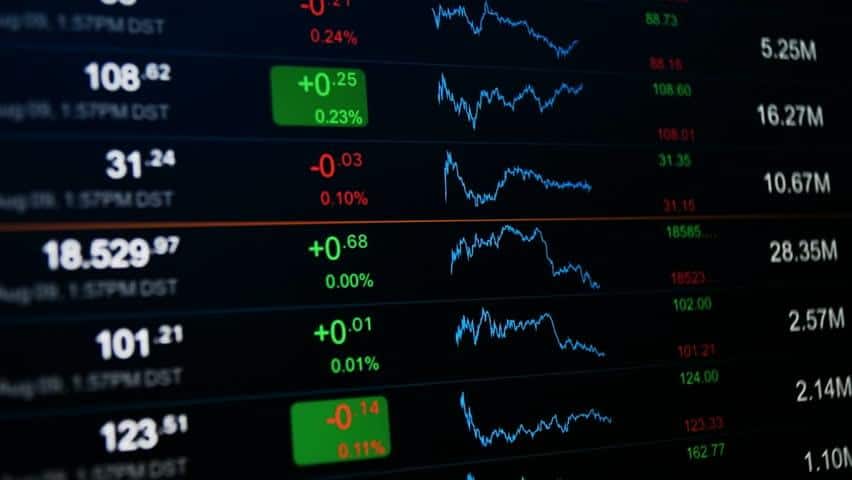Are you thinking of switching from trading one financial instrument to another? This article will look at the five key considerations a trader should scrutinize before making the switch.
Many traders who consider themselves specialists in one specific market might decide to switch to trading another for various reasons. This can include cheaper execution costs, greater volatility, ‘dead markets,’ lower capital requirements, or anything the trader feels would provide them an edge in the new environment.
Nonetheless, the motivations for someone to change from trading forex to crypto, stocks to forex, or commodities to futures are plentiful. Regardless, every instrument is wholly unique, and switching can prove challenging.

Whether one is looking at forex, equities, indices, cryptocurrencies, futures, or commodities, among others, no financial instrument is inherently simple to trade and achieve long-term success nowadays.
Ultimately, figuring out where the price of an asset will move towards often is no easy task, requiring years of experience, trial and error, persistence, and dedication. This fundamental truth is imperative for anyone considering switching from one financial instrument.
Converting shouldn’t be as careless as just opening a trading account with a new broker. An investor should perform thorough due diligence and examine everything about the new derivative they want to venture into.
1. The opening hours
Fortunately, most markets nowadays, like forex, futures, and crypto, are open 24/5. However, someone moving from any of these to equities or most indices, for instance, would need to note the change.
The majority of stocks and several indices historically have always opened for a limited time during the week. With this in mind, one would have to plan their trading schedule and strategies around such times.
The new market may experience its highest trading activity at these moments. Spreads or trading costs might vary at different times, which is something else worth noting. Thus, the opening hours affect a trader’s schedule, time commitments, where they expect the least or most volatility, and favorable trading conditions.
Another instance is if someone moved from trading forex to cryptocurrencies. Crypto is one of the few markets open during the weekend due to its largely decentralized nature. A trader may find this attribute attractive or suitable if they have more time at these times to trade this instrument.
Something else to consider is markets closed at certain periods sometimes experience gapping, most notably indices and stocks during the week, and, to some extent, forex during the weekends. This is also another point affecting whether a trader wishes to hold positions overnight or over the weekend based on the perceived risk.
2. Trading costs
Fortunately, with the competitiveness and abundance of brokers and exchanges presently, spreads in a vast majority of markets are fairly reasonable. Nonetheless, this is still something worth observing as, in some instances, a thinly-traded asset class is likely to be more expensive.
For instance, although forex is one of the cheapest markets to trade, someone looking at the exotic pairs would see a vast difference because of the lower volatility and demand. Or, if one was looking at low-cap stocks moving from forex, the outcome is similar.
If we look at the trading style, costs do impact the long run, as the more one trades, the more the fees accumulate. Not only are the spreads worth mentioning, but also the commissions some brokers might apply depending on the market.
This is also another aspect impacting the overall costs and a factor certainly worth thinking about. A unique situation is a trader moving from stocks to forex, the latter of which incurs, sometimes, swaps when positions are held overnight.
Therefore, spreads, commissions, and any other costs unique to a particular instrument are all considerations needing prior careful research.
3. Margin requirements
The margin or leverage requirements affect the amount of risk capital someone could realistically deploy. Most equities characteristically have always had tighter leverage, usually not above 1:50 but typically a lot less.
Cryptocurrencies also share a similar attribute as they often don’t go above 1:100, averaging around 1:20 with most providers. Forex is, by far, the highest leveraged instrument globally, where the available leverage can reach up to 1:2000.
Aside from the adage of leverage being a double-edged sword, from a financial perspective, the margin requirements affect the starting capital. So, for instance, someone moving from forex to stocks will find they need more money to open the same position size due to the lower leverage.
Yet, to some extent, higher leverage would likely make a trader lose more money faster if not used responsibly, which they can’t ignore.
4. Influence
By influence, we refer to some of the primary drivers that tend to move a distinct instrument. Generally, technical analysis remains consistent across the board. However, the fundamental factors and their complexity will vary, which is something worth noting.
So, for example, someone moving from forex, which may be used to analyzing interest rates, would need now to study other fundamentals like earnings and revenues on stocks.
With futures, the Commitment of Traders report is imperative data investors consistently analyze affecting other derivatives like some forex, indices, and commodities markets.
However, if one was transitioning into something else like cryptocurrencies, such an indicator is currently unavailable, which will naturally affect how the trader would carry out their analysis.
The fundamentals on one market might be easier or more demanding compared to another. Other instruments could be heavily influenced by intra-day circumstances like news releases, one-off political events, or anything else, all of which traders would need awareness of.
5. Market conditions
Each market moves uniquely from one another. Some securities like forex are heavily mean-reverting, tending to move more in ranges than trends. Conversely, many stocks often move in drawn-out, multi-year trends with minor pullbacks; we should share a similar sentiment to a few indices and cryptocurrencies.
Essentially, someone venturing into a new asset class needs to build a profile in how that market generally moves over a specific period. This attribute affects the trader’s strategy, hold times, and risk tolerance.
As an example, if a market tends to exhibit many breakout moments like forex, one might consider adopting a strategy to exploit this if they’ve been used to long-term trend trading on stocks.
The main premise is really taking a bird’s eye view of the new market and being attuned to its rhythm, volatility, liquidity, and overall behavior.
Final word
Traders with numerous years of experience have likely switched from trading one market to another, perhaps to look for new opportunities or things have stagnated in their go-to instrument.
Regardless of the motivations, this article should provide a checklist of the important things to consider to make the switch a carefully observed decision.




